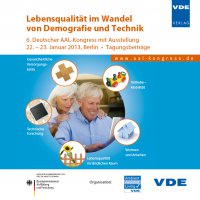Housing Enabling – Aufspüren von Gefahrenstellen im Wohnbereich unter Zuhilfenahme eines mobilen Roboters
Konferenz: Lebensqualität im Wandel von Demografie und Technik - 6. Deutscher AAL-Kongress mit Ausstellung
22.01.2013 - 23.01.2013 in Berlin, Deutschland
Tagungsband: Lebensqualität im Wandel von Demografie und Technik
Seiten: 7Sprache: EnglischTyp: PDF
Persönliche VDE-Mitglieder erhalten auf diesen Artikel 10% Rabatt
Autoren:
Volkening, Nils; Isken, Melvin; Frenken, Thomas; Brell, Melina; Hein, Andreas (OFFIS e.V. - Institute for Information Technology, Oldenburg, Germany)
Inhalt:
Because of the greying society the need of user centred care concepts are raising. One big wish of older persons is to stay as long as possible in their own flat. Depending on the demographic change it won´t be possible to realize complete care by formal or informal caregivers especially for people living alone. One possible way to cope this problem is to use ICT based solutions e.g. mobile service robots. The personal in-house mobility and its preservation it is one goal to enable staying as long as possible in her/his own flat. The concept of an automated housing enabling assessment which is presented here is an advanced solution for this problem. It is based on three main components: 1.) Measurement and analysis of the cognitive and physical capabilities of the user, 2.) Measurement and validation of the flat and 3.) Computation of areas with a higher risk to fall and advice to remove such issues, e.g. restructuring of the furniture. The great benefit of a mobile robot platform is that all needed sensors are mounted on the robot and it can follow the user to make measurements at different places in the home. This will reduce the cost and installation effort in the flat to a minimum. Another benefit is the continuous assessment which helps to restructure the flat in a continuous way. This helps to reduce the probability of a fall event and raise the feeling of safety. All measurements could also be used by other assessment tools to preserve the indoor mobility not only by preventing a fall event but also by reacting on changes in the mobility level over time.


